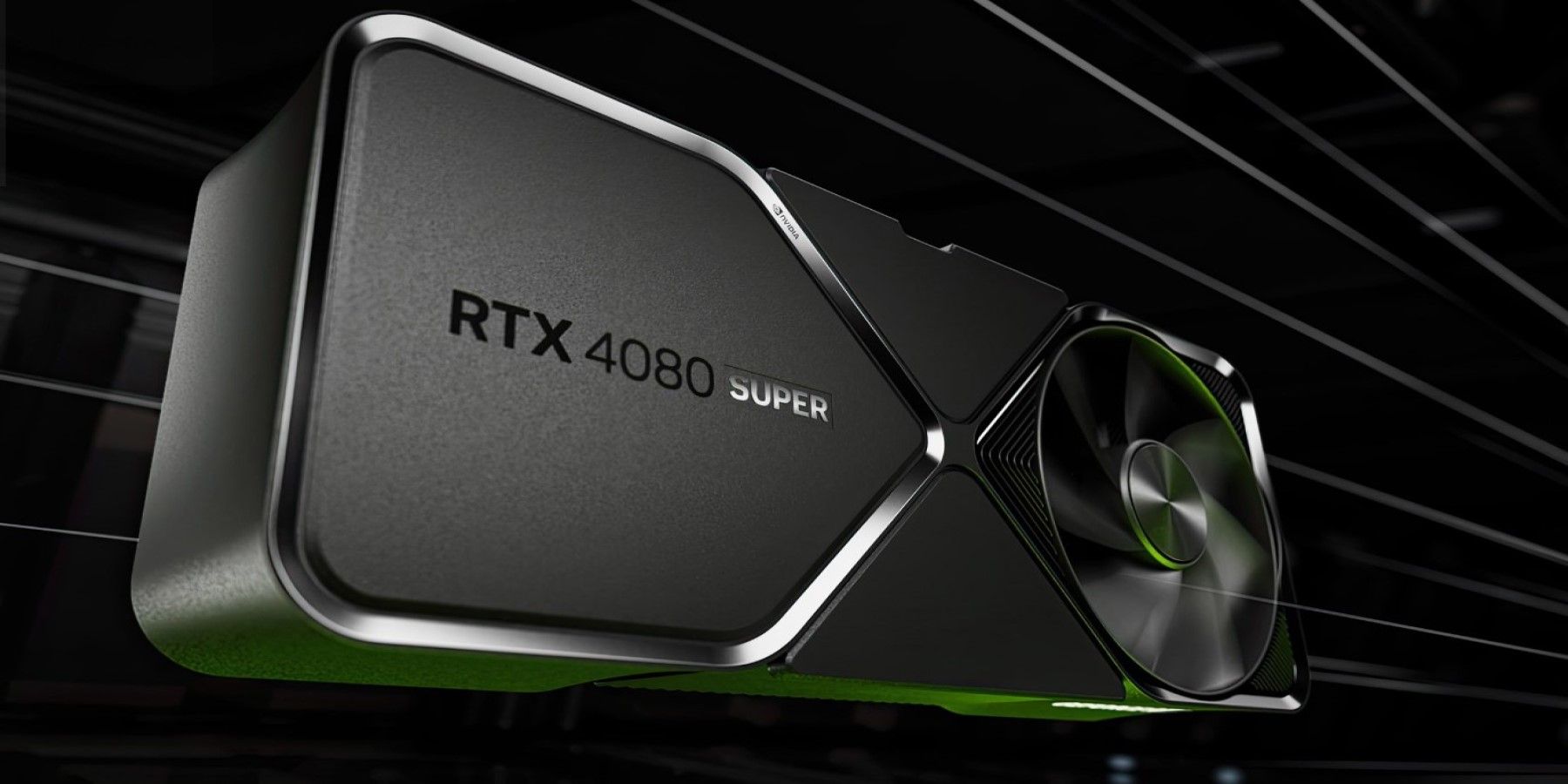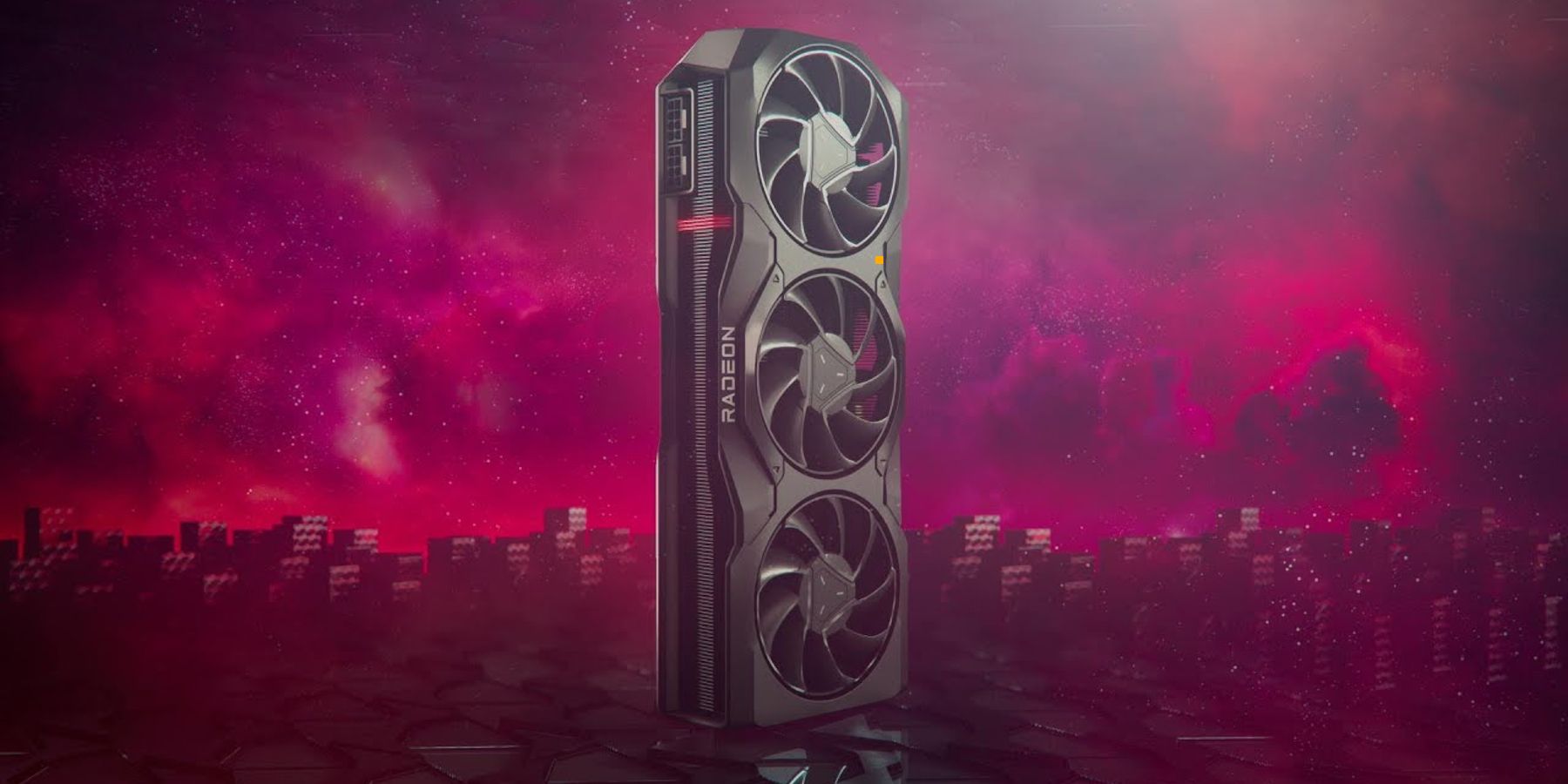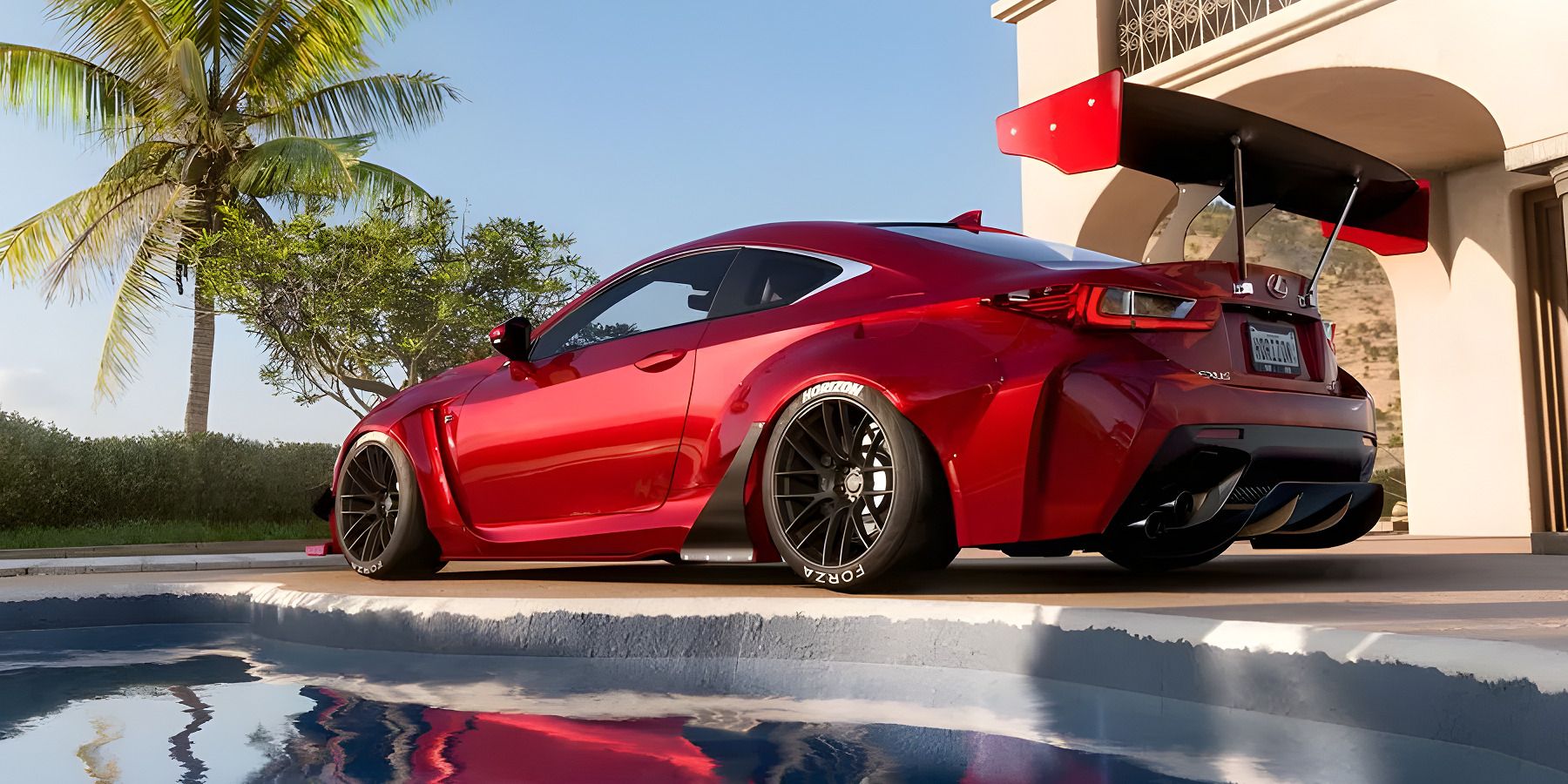-
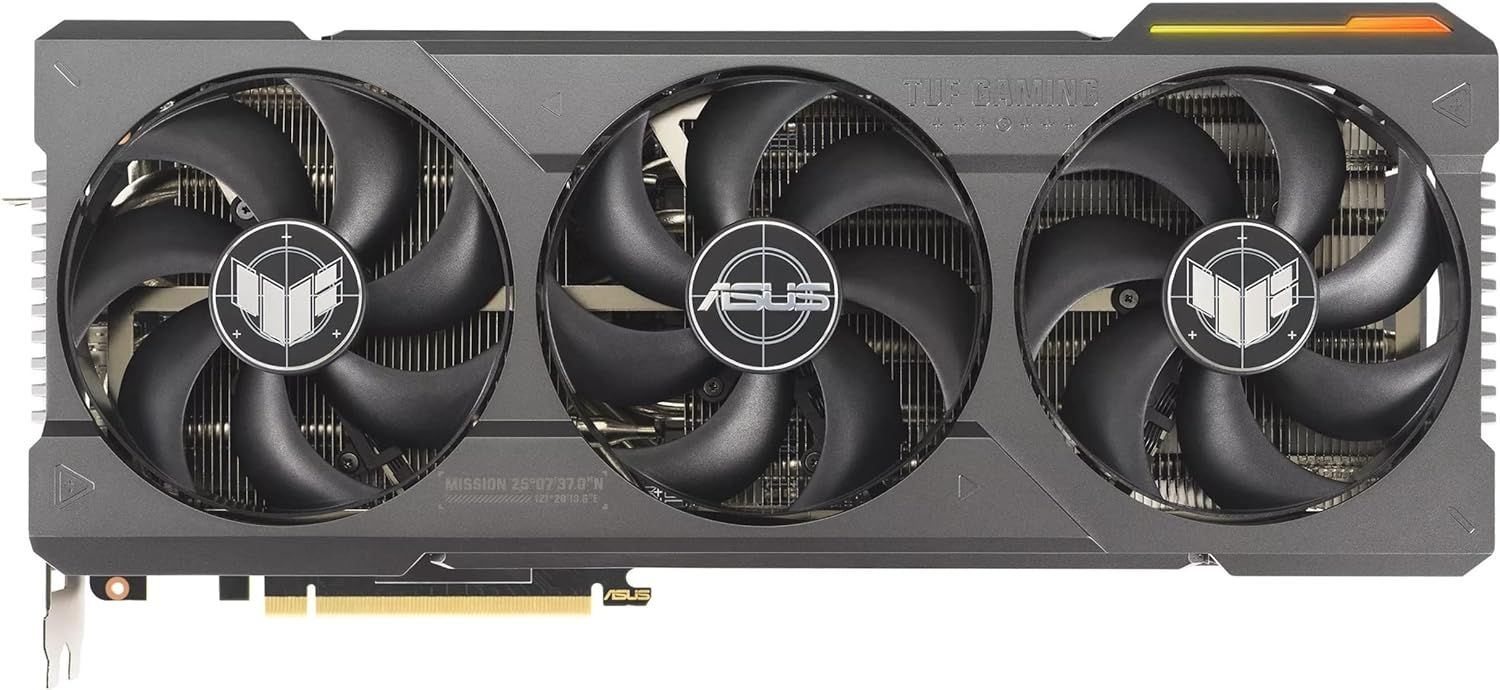
ASUS TUF Gaming RTX 4080 SUPER OC
The ASUS TUF Gaming RTX 4080 SUPER OC is an excellent aftermarket take on the RTX 4080 SUPER, offering a higher boost clock than the stock option even as it clocks in an additional $100 on MSRP. It offers excellent reliability, power delivery, and one of the best aftermarket coolers one can get for Nvidia's higher-end RTX 4000 series GPUs.
Pros- Significantly faster Ray Tracing performance
- More power-efficient
- Comparable raster performance at 1080p
Cons- Lower VRAM compared to 7900 XTX
- Quite big and can have compatibility issues with compact cases
-
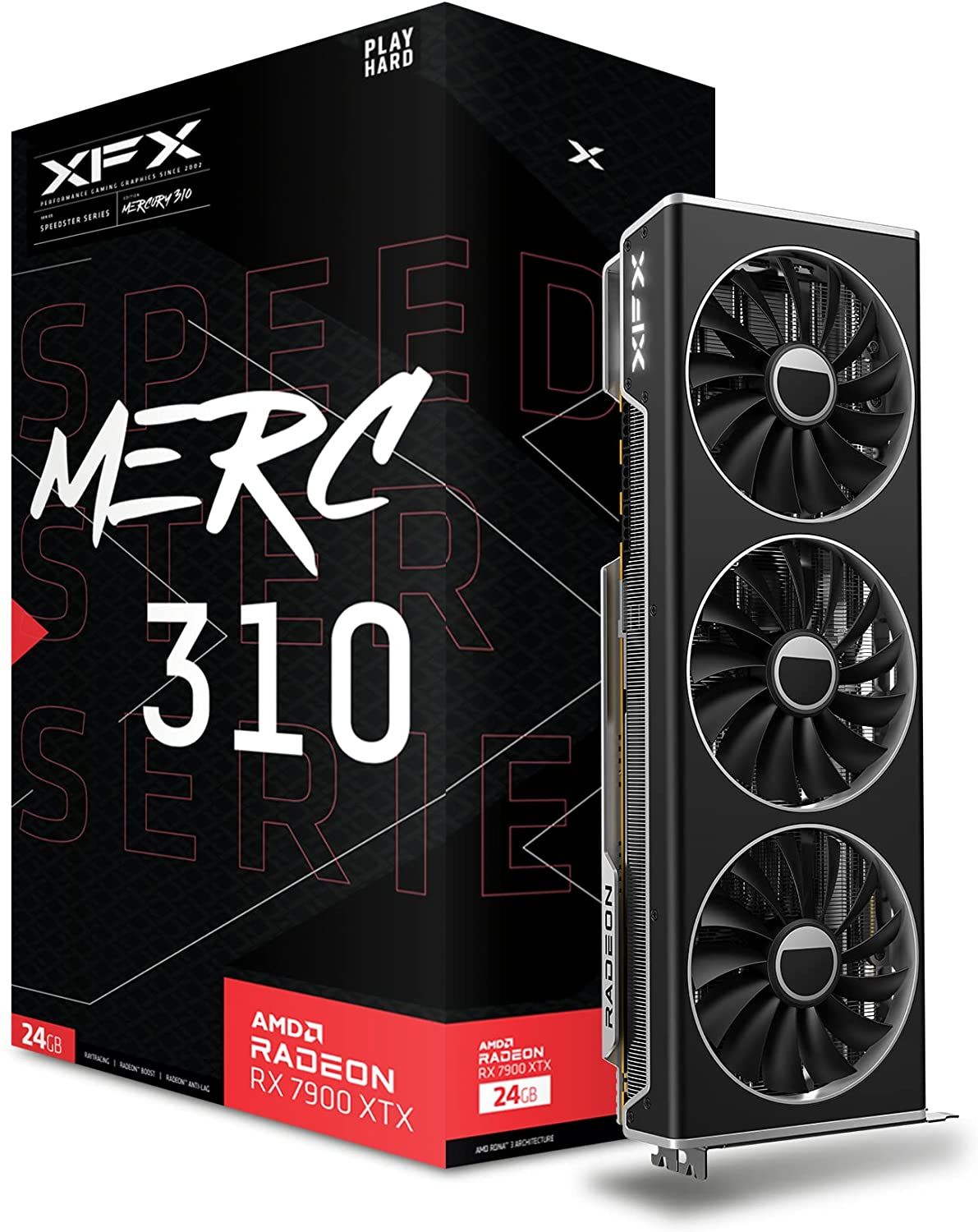
XFX Speedster MERC310 AMD Radeon RX 7900XTX Black 24G
$926 $1000 Save $74AMD's Flagship RX 7900XTX is a behemoth that trades blows with Nvidia's RTX 4080 and sometimes the RTX 4090 and regularly comes out ahead versus the former.
With 24GB of GDDR6X memory and the latest in connectivity thanks to support for Displayport 2.1 backed by one of the best cooling designs we have seen on a GPU, the XFX Speedster MERC310 AMD Radeon RX 7900XTX Black 24G is a force to be reckoned with.
It is a marked improvement on everything that makes the 7900XTX such a potent performer, but better and faster than the stock unit.Pros- Slightly faster at rasterization
- Generally available for a lower price than its MSRP
- A big 24GB VRAM for future-proofing
Cons- Consumes more power at basic tasks and gaming
- Significantly slower at Ray Tracing
- Upscaling technique FSR 3 not as matured as DLSS 3
While Nvidia poured every ounce of energy into its flagship RTX 4090 GPU, AMD maxed out its potential Radeon RX 7900 XTX. Both have a significant price and performance gap, but Nvidia's 80-class cards make the competition more exciting. Initially, the RTX 4080 was launched for $1200 to fill the gap between the 4070 Ti and the 4090, but it was the most unappealing GPU in the Ada family due to its poor pricing.
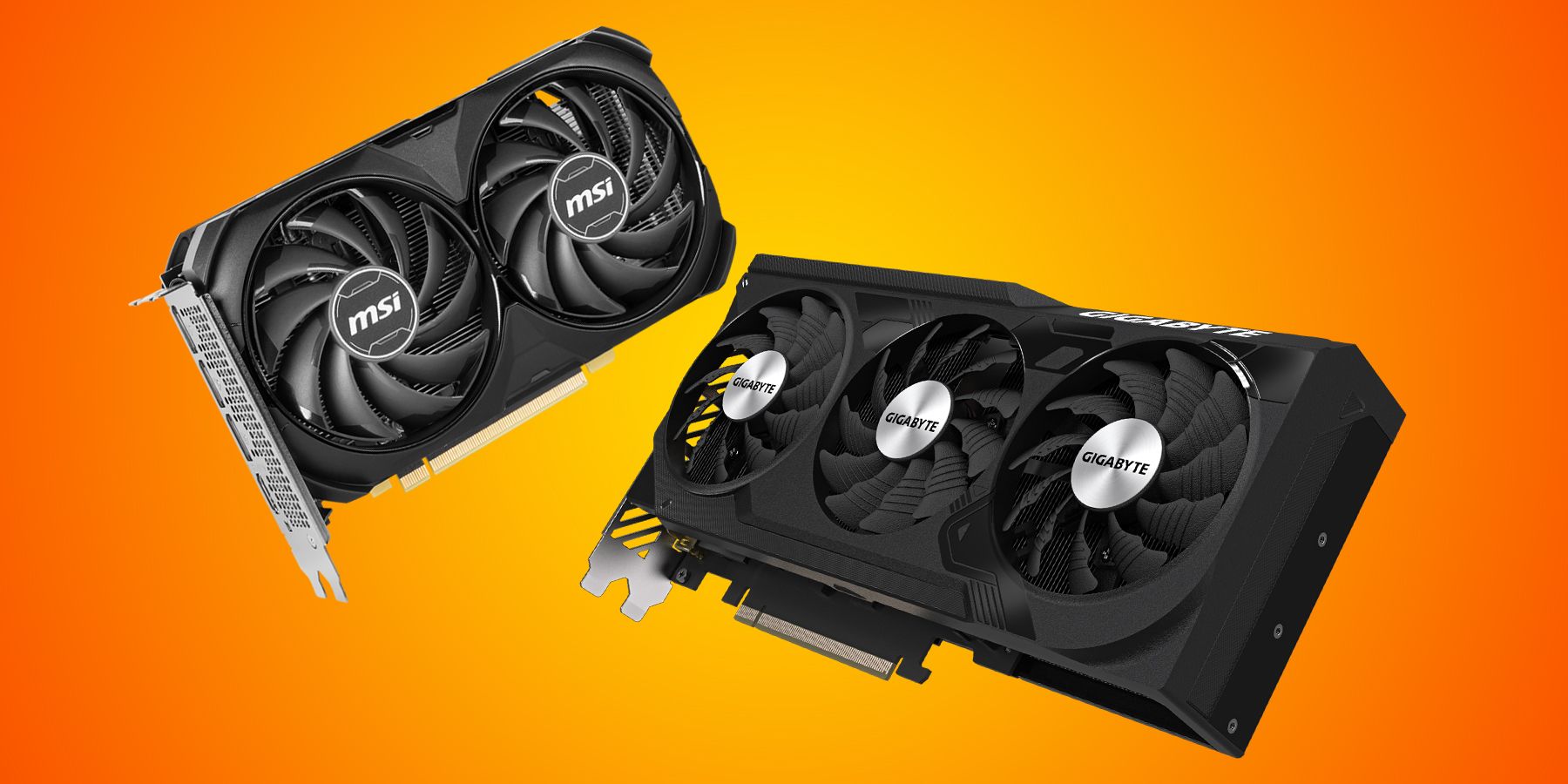
RTX 4060 Ti vs. RTX 4070 - Which Is Better For Mid-Range Gaming?
Nvidia's cost-effective RTX 4060 Ti and RTX 4070 cards offer some of the best mid-range performance at an affordable price. How do they compare?
However, with the launch of the RTX 4080 Super GPU, Nvidia is finally going head-to-head in competition with AMD against the RX 7900 XTX. Both GPUs are among the strongest graphics cards ever produced and promise 4K gaming with smooth performance. If you are somewhat familiar with their differences, this comparison guide will explain them in detail, guiding you to choose the best one between them.
Specifications: RTX 4080 Super vs RX 7900 XTX
Even though both GPUs belong to completely different families and use different architectures, their specifications can still be compared in a few areas which help us analyze their theoretical performance. It should be kept in mind that the differences in specifications are only for reference purposes and the real-world benchmarks are what matter the most. We will analyze their benchmarks in the next section, but it's equally important to understand the differences in their specs that lead to their performance differences.
Nvidia Geforce RTX 4080 Super
The RTX 4080 Super is the successor of the non-Super RTX 4080 edition and was launched in January this year. The RTX 4080 Super is based on the Ada-Lovelace architecture and uses TSMC's 5nm process node to achieve a die size of 379mm2. It uses the same AD103 GPU die as used on the 4080, but the GPU variant is AD103-400-A1 instead of AD103-300-A1. The die size remains the same, but the Cuda Cores are increased by 10.5% (10240 vs 9728).
Similarly, the RTX 4080 Super gains some more Tensor and RT Cores, but most of the specification numbers remain identical. The final result is the same 310mm GPU which boasts a triple-slot design and uses a single 12VHPWR connector for fulfilling its 320W of TGP.
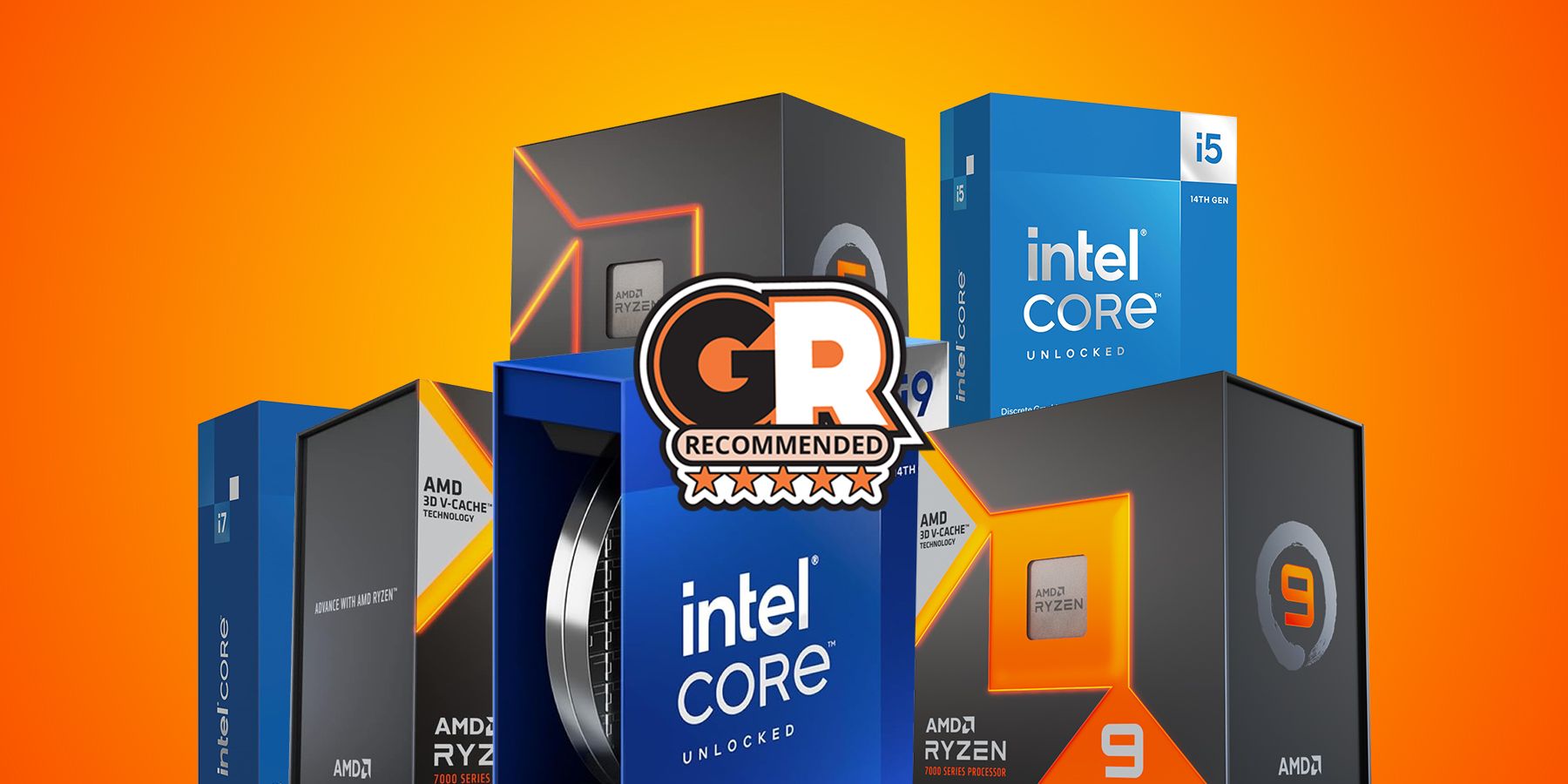
The Best CPUs to Pair with the RTX 4080 SUPER
Here are some of the best CPUs to pair with Nvidia's penultimate RTX 4000 Series GPU in 2024.
The memory configuration is much better than what is found on most 4070 GPUs and is technically the same as on the 4070 Ti Super and the RTX 4080. It has 16GB GDDR6X VRAM with a 23Gbps effective memory clock on a 256-bit bus, which results in a total memory bandwidth of 736.3GB/s. This is slightly higher than the RTX 4080 by around 2.5%, but is around 9.5% more than the 4070 Ti Super.
Note that the SM count on the 4080 Super is slightly higher than the 4080, which explains the higher flop rates on the former. So, theoretically, the RTX 4080 Super should be faster than the 4080, but we will see that later. Regardless of whether the 4080 Super is faster than the 4080 or not, what matters is the performance difference between itself and the RX 7900 XTX.
AMD Radeon RX 7900 XTX
Coming to the AMD one, let us make it clear that the architecture, core count, and even the theoretical performance like Pixel Rate, Texture Rate, or even FP16/FP32 performance can't be compared directly to the RTX 4080 Super. We can compare both these GPUs in memory configuration, size, and power consumption, but we cannot compare their architecture or GPU die to make a conclusion. Still, it's important to understand what route AMD took in order to craft its flagship RX 7000 GPU.
The 7900 XTX uses the full Navi 31 GPU chip, which results in a total of 6144 Stream Processors (not to be confused with Cuda Cores). The die size is significantly bigger than the AD103 on the 4080 Super and is roughly 40% bigger in area. On the 7900 XTX, you get a much higher memory bandwidth of 960GB/s as a result of a wider memory bus width of 384-bit. The VRAM size is also much bigger, and you will have 24GB of total VRAM, which is the exact size of the RTX 4090. Of course, it's GDDR6 vs GDDR6X on the Nvidia card and that's why the 4090's memory configuration is a lot faster.
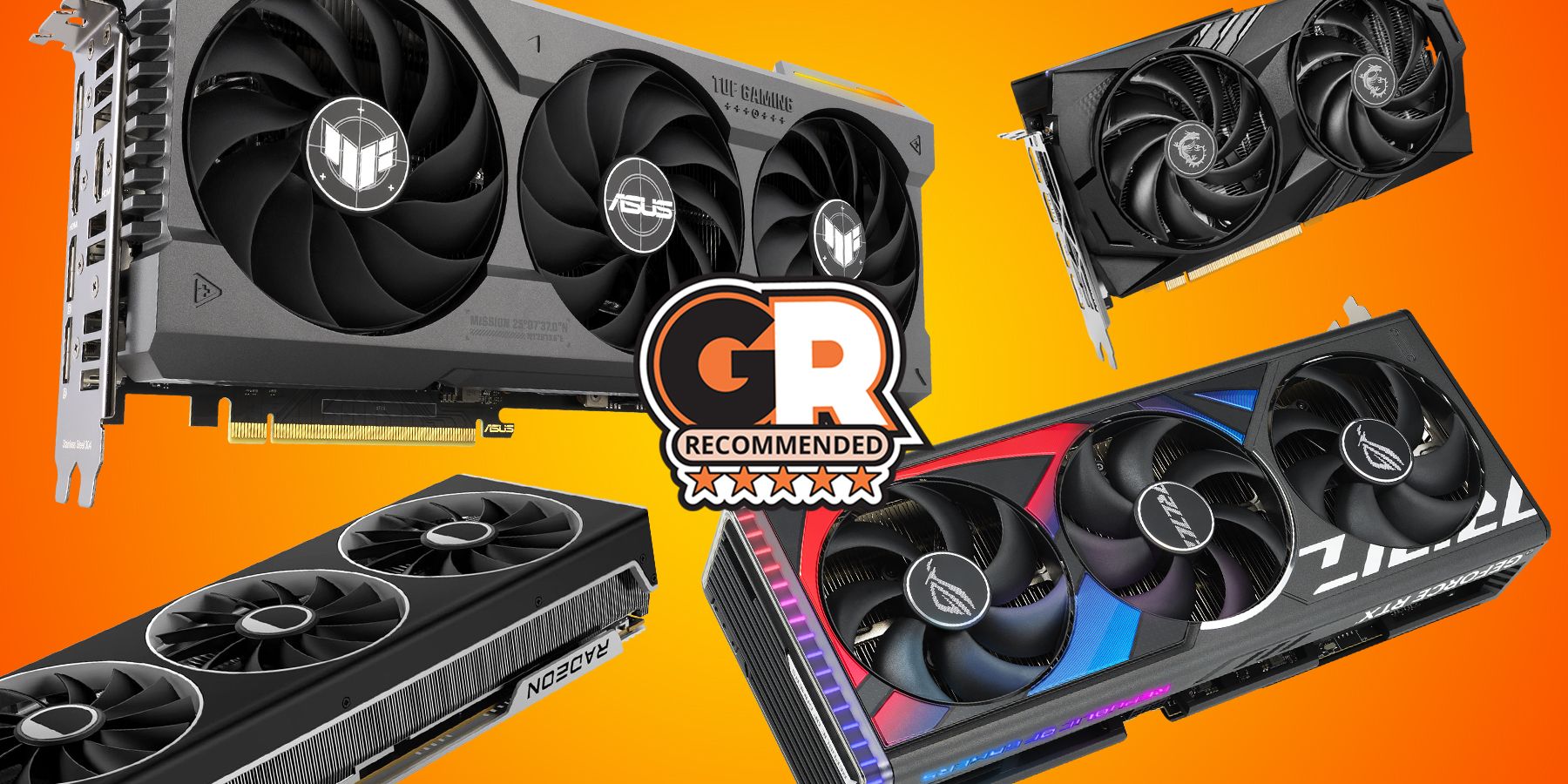
The Best GPUs For Gaming On The AMD Ryzen 7800X3D
AMD Ryzen 7800X3D Is the fastest gaming CPU on offer for gamers to date. Here are some of the best GPUs that you can pair to get the most out of it.
The RX 7900 XTX is also Ray Tracing capable just like the previous RDNA 2-based GPUs, but it has improved a lot since the last time. All in all, the RX 7900 XT is theoretically a big challenge to the RTX 4080 Super and is also smaller with 287mm length and a dual-slot design when we compare their reference editions. However, the power consumption is a bit more than the Nvidia card (355W vs 320W), which may or may not translate well to real-world tests.
Performance
We will divide the performance section into three different parts: Raster, Upscaling, and Ray Tracing. This helps in understanding the specialty of each GPU and will simplify the selection. Raster performance is what their raw performance in gaming will look like while Upscaling performance is how much improvement you can get with the usage of technologies such as DLSS and FSR. Ray Tracing is another way of testing how good these are in creating dynamic lighting and shadows.
Rasterization
At 1080p, expect the RX 7900 XTX to be 1-2% faster than the RTX 4080 Super. This will mostly be unnoticeable as the frame rates will be quite high at this resolution. Both GPUs are able to deliver past 100 fps on the highest graphical presets in almost every game. Many games will run easily over 200 fps at 1080p, which is why it's important to check their performance at 1440p and 4K.
At 1440p resolution, the gap between the two increases a bit with the RX 7900 XTX gaining 1-2% more boost over the RTX 4080. Again, many games are able to reach over 100 fps at this resolution. So, the difference between 145 and 150 fps won't be noticeable. At 4K, the RX 7900 XT gets another 1-2% performance boost over the RTX 4080 Super, making it around 4-5% faster overall. It should be kept in mind that this is the average performance difference if you are considering several games.
There are games where the RTX 4080 Super will outperform the 7900 XTX with up to 14-17% higher performance at 1440p and 4K, while in some other games, the RX 7900 XTX has a similar improvement over the Nvidia one. The majority of the games favor the Radeon GPU more, making it an overall better choice in pure raster performance.
Upscaling
As of now, DLSS is much more mature than FSR, and, with the support for DLSS 3, the RTX 4080 Super can take advantage of Frame Generation as well. FSR 3 also has frame generation, but it is lacking in a few areas. The visual quality of DLSS 3 is also superior, but in UI, the FSR 3 does have a slight edge over DLSS 3.0. Overall, expect the RTX 4080 Super to excel in performance and visuals with DLSS, but considering both GPUs already deliver excellent performance natively, you may not need to turn these upscaling techniques on, except if you are turning on Ray Tracing.
Ray Tracing
This is where the tables are turned in favor of the RTX 4080 Super quite convincingly. The RTX 4080 Super completely blows the RX 7900 XTX out of the water, reaching up to 20% higher performance at 1080p, 1440p, and 4K resolutions. Compare 100 fps vs 80 fps, and you will most likely notice the difference if you are a seasoned gamer. So, once again, Nvidia scores a convincing victory here, as it has been scoring well since it launched its Turing-based series.
Power Consumption
Going by the default TGP of both cards, the RTX 4080 Super should consume 35 watts less in ideal conditions at 100% usage, provided you are not overclocking the GPU. The RX 7900 XTX should consume no more than 355 watts in a similar scenario. In real-world tests, the power consumption will never be exactly the advertised TGP, as every operation won't put a 100% load on the GPU.

The Best PSUs For Your Gaming PC in 2024
A gaming PC needs a quality PSU now more than ever thanks to power-hungry CPUs and GPUs. Here are Game ZXC's picks for the best PSUs for gaming PCs.
So, for instance, in normal tasks like browsing, opening some sheets, watching movies, and similar less-intensive tasks, the GPU usage will be quite low. On the other hand, in games, the GPU usage can be anywhere from 40% to 100% depending on the game being played on the computer. In multi-monitor setup, as well as during simple tasks like video playback, the RTX 4080 Super is almost twice as power efficient as the RX 7900 XTX. The 4080 Super needs no more than 20 watts in such operations, but the 7900 XTX consumes over 40 watts.
However, in video games, the 4080 Super easily reaches 300 watts and the 7900 XTX also comes close to its rated TGP of 355 watts. So, the 4080 Super wins in the power-efficiency department.
Pricing
Compared to its sibling, the RTX 4080, the 4080 Super costs $200 less. The RTX 4080 is priced at an official MSRP of $1000, which is the exact MSRP of the Radeon RX 7900 XTX. If we go by their official MSRP, the RTX 4080 Super looks a better choice considering it is close in raster performance, but offers way better ray tracing. But as usual, you won't necessarily find both these cards at their MSRPs.
At the time of writing, the RX 7900 XTX can be found for as low as $900 and the cheapest RTX 4080 Super is available for $1000. So, this isn't something that you can decide so easily. Depending on how much you are spending on each, comparing the price-to-performance ratio may get you a clearer picture.
Conclusion
The RTX 4080 Super is definitely a top-notch choice, even if the RX 7900 XTX didn't exist. The price drop of $200 compared to the 4080 while the performance remains somewhat better, makes the RTX 4080 Super a killer card for 1440p and 4K gaming. If you are looking to play at 60+ fps at 4K, the 4080 Super is a great alternative to the RTX 4090, which is significantly costlier.
Now if we compare it to the RX 7900 XTX, it is marginally slower at higher resolutions in rasterization. With a much matured upscaling technique, the 4080 Super delivers stable frames, better visual quality, and helps it achieve good performance with Ray Tracing on. Even without the upscaling technique, the RTX 4080 Super is simply too powerful when compared to the 7900 XTX in ray tracing, delivering a staggering 20% uplift in frame rates. This is quite a big number considering the 4080 Super is already equivalent to the 7900 XTX in rasterization. Another noteworthy point to consider is its power efficiency, which excels at basic tasks and also in gaming, making the RTX 4080 Super overall a better gaming GPU for $1000.
On the other hand, the RX 7900 XTX isn't much behind either. It gives you 8GB more VRAM, which will supposedly do better in future titles if they require more VRAM. Even in the most intensive Triple-A titles available at the moment, it successfully beats the 4080 Super in most games in raw performance. With time, the Ray Tracing performance will also improve on the upcoming AMD GPUs, but at least the FSR 3 is doing great against DLSS 3 for achieving higher frame rates. If you are getting the 7900 XTX for $100 less than its MSRP (which is easily possible these days), the price-to-performance ratio you will get with the AMD GPU will be quite comparable to the RTX 4080 at $1000.
FAQ
Q: Is the 7900 XTX better than the 4080 Super?
The RX 7900 XTX is slightly faster in raster performance and also gives you more VRAM. But in Ray Tracing, the 4080 Super is significantly faster.
Q: Can the RX 7900 XTX do ray tracing?
Yes, the 7900 XTX is capable of enabling ray tracing in supported games.
Q: Can the RX 7900 XT handle 4K?
The RX 7900 XT quite easily handles most games at 4K resolution, providing over 60 fps consistently. However, it's not recommended to turn on ray tracing at 4K.

